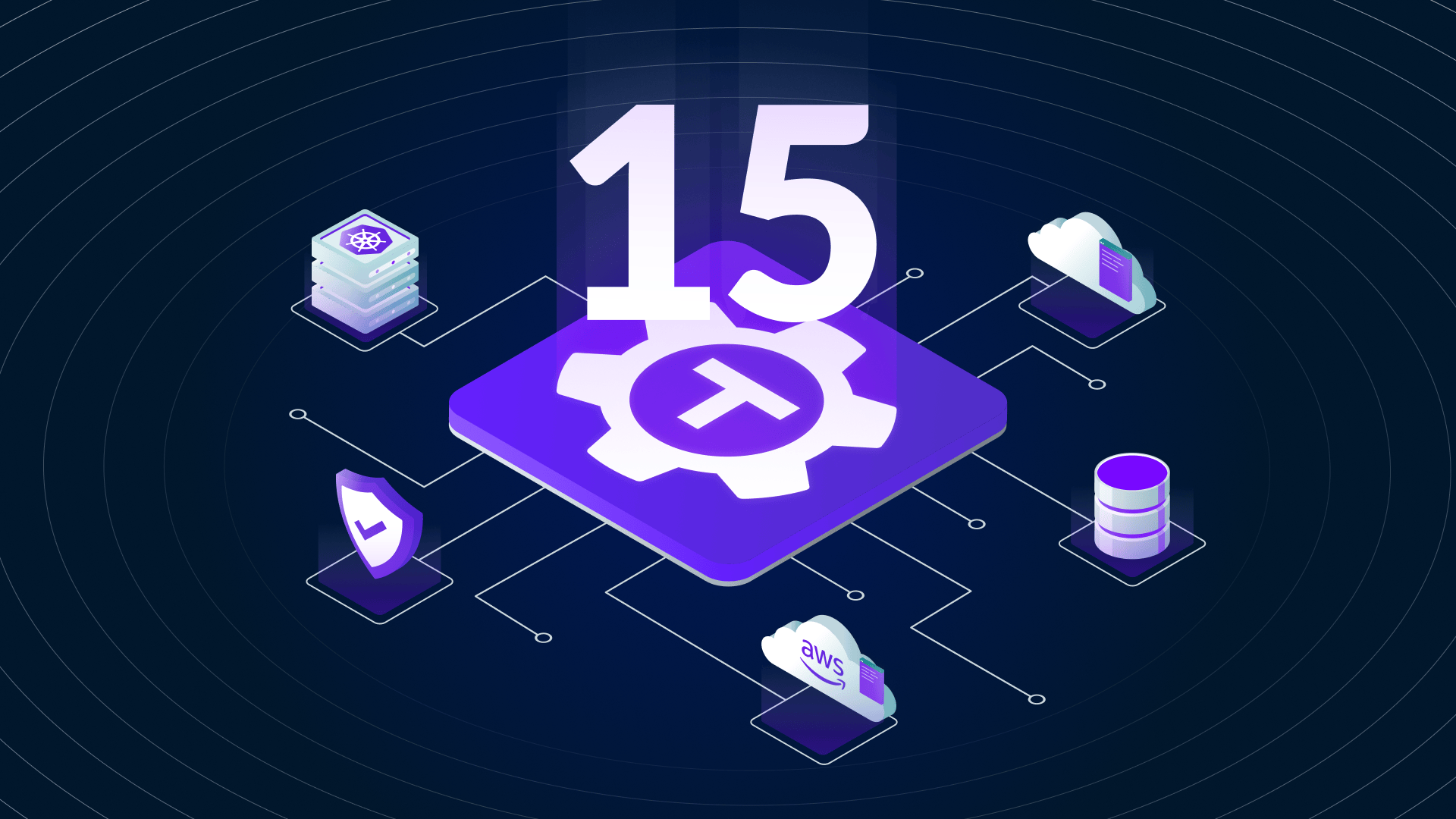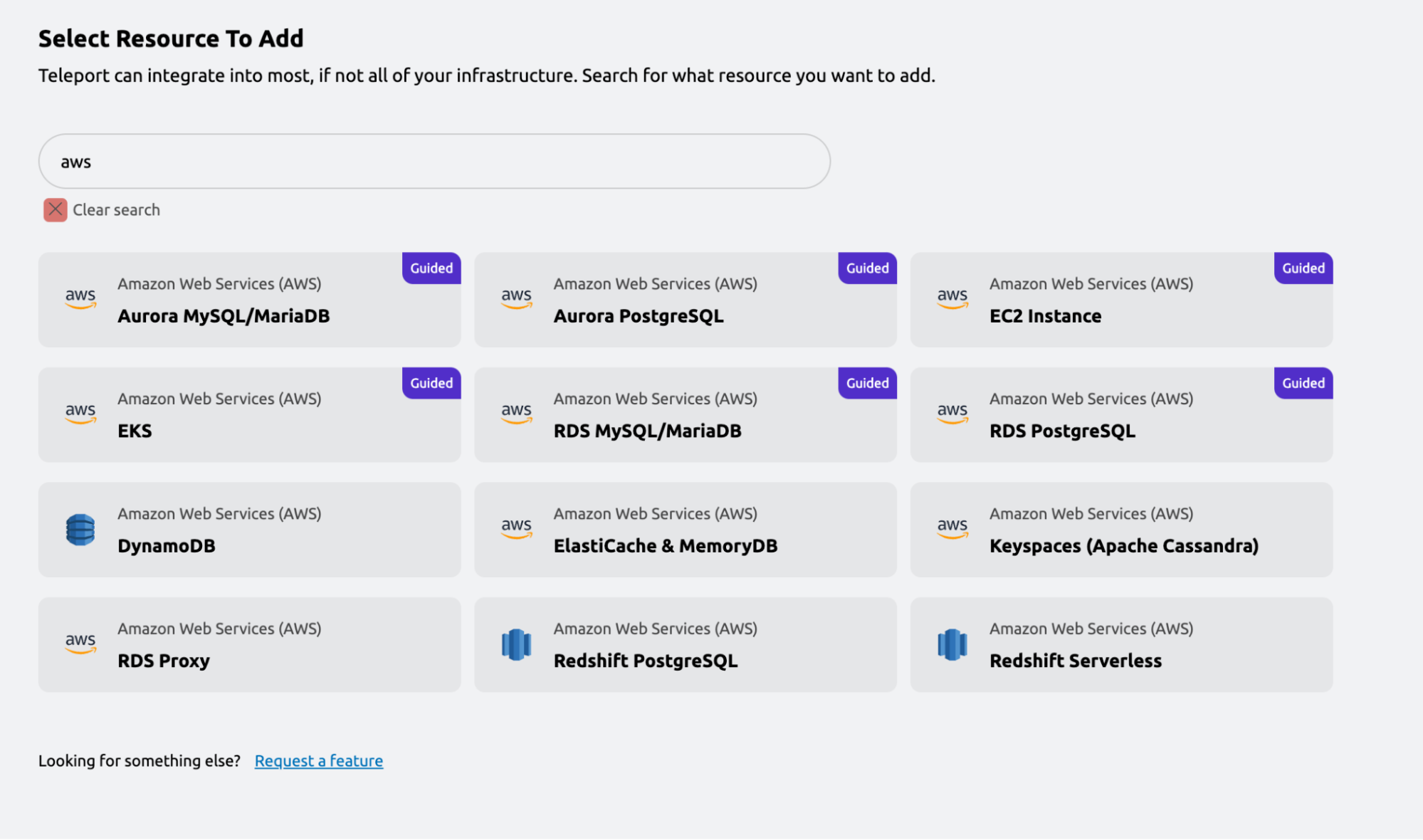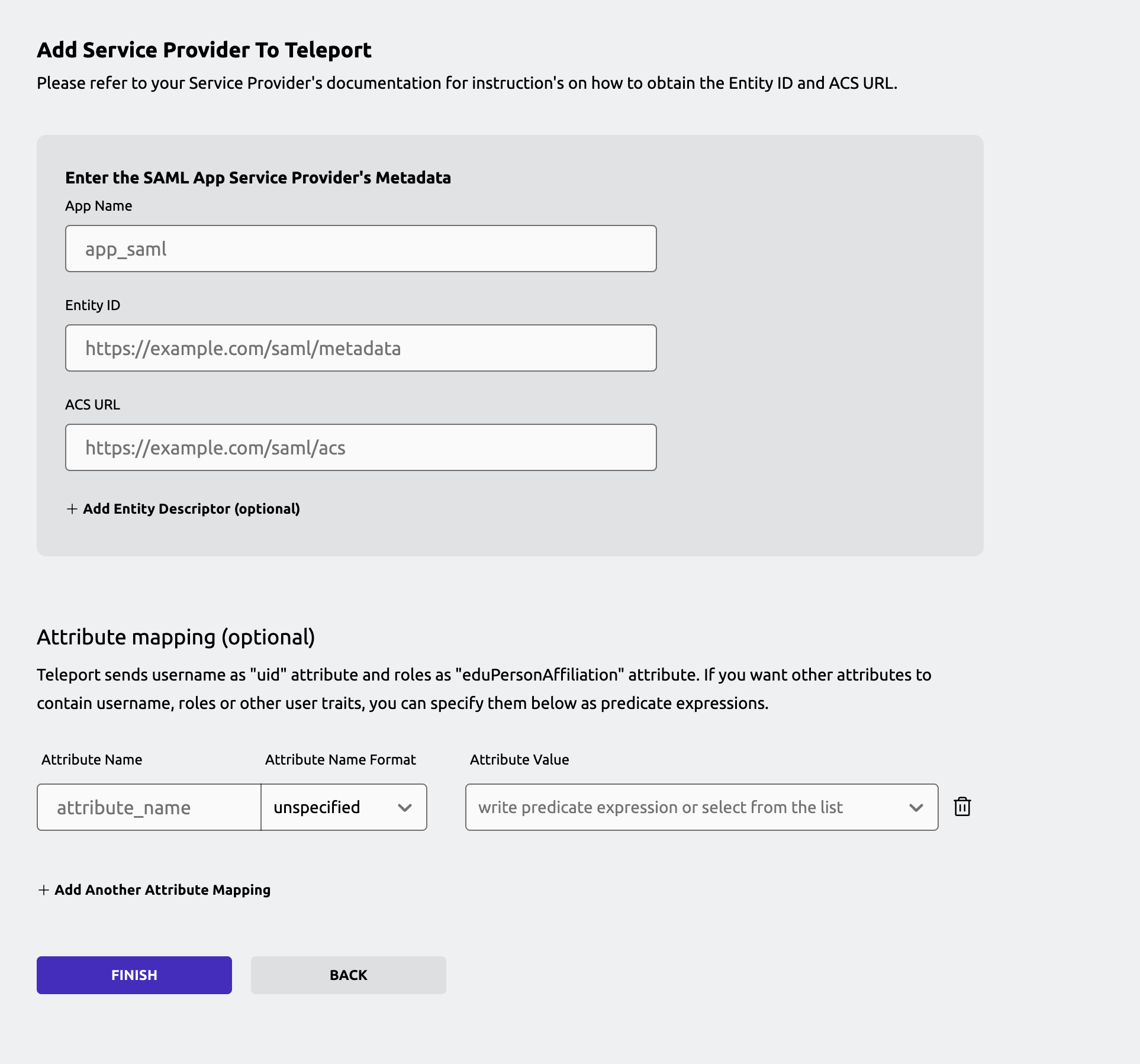Home - Teleport Blog - Teleport 15 - Feb 1, 2024
Teleport 15

It’s that time again — for a brand new major release. Our team releases major versions of Teleport every 4 months. This post goes into more detail about the release, breaking changes, bug fixes and improvements.
We have received feedback that our shipping frequency can make it tricky to stay up to date with the latest upgrades. This is why we recommend using Teleport Enterprise Cloud, where we take care of upgrades for you, and it’s even possible to auto-upgrade the agents. Talk to our team if you’re interested.
We’ll be deep-diving into this release on February 20th at 10AM PST. Register here for the webinar.
Teleport 15 brings the following new major features and improvements:
- Teleport Platform Updates
- Updated UI [All]
- Session playback improvements [All]
- Teleport Connect improvements [All]
- MFA for Administrative Actions [All]
- Support for AWS KMS [Enterprise]
- Standalone Kubernetes Operator [All]
- Roles v6 and v7 support for Kubernetes Operator
- ARM64 builds for FIPS [Enterprise] & ARM AMIs [All]
- Teleport Access
- SSO - Improved provisioning for Okta [Enterprise]
- Resources
- Windows
- Performance Improvements [All]
- SSH
- SSH connection resumption [All]
- Kubernetes
- EKS Integration for Teleport [All]
- Databases
- RDS auto-discovery in Access Management UI [Enterprise]
- Applications
- Improved SAML IdP configuration flow [Enterprise]
- Windows
- Teleport Identity
- Device Trust for Linux [Enterprise]
In addition, this release includes several changes that affect existing functionality listed in the “Breaking changes” section below. Users are advised to review them before upgrading.
Teleport Access
Updated UI
Prior to Teleport 15, there was a dropdown in the sidebar between “Resources” and “Management,” and in the Resources mode, there were tabs in the sidebar for Access Requests and Active Sessions. In Teleport 15, all of the above have moved to tabs in a top navbar, and the Resources view is fully responsive across viewport widths. A side navbar still exists in the “Access Management” tab.
Prior to Teleport 15, Passkeys and MFA devices were shown in a single list on the “Account Settings” screen, without a clear distinction between them. In Teleport 15, these have been split into distinct lists so it is clearer which type of authentication you are adding to your account.
Session playback improvements
Prior to Teleport 15, tsh play and the web UI would download the entire session recording before starting playback. As a result, playback of large recordings could be slow to start, and may fail to play at all in the browser.
In Teleport 15, session recordings are streamed from the auth server, allowing playback to start before the entire session is downloaded and unpacked.
Additionally, tsh play now supports a --speed flag for adjusting the playback speed, and desktop session playback now supports seeking to arbitrary positions in the recording.
SSO - Improved provisioning for Okta
Teleport 15 improves performance of receiving user/group updates from Okta by leveraging System for Cross-domain Identity Management (SCIM).
Note: This feature will come out in a later 15.0 patch release.
Teleport Connect improvements
Teleport Connect will now prompt for an MFA tap prior to accessing Kubernetes clusters when per-session MFA is enabled.
Additionally, Teleport Connect includes support for TCP and web applications, and can also launch AWS and SAML apps in a web browser.
Standalone Kubernetes Operator
Prior to Teleport 15, the Teleport Kubernetes Operator had to run as a sidecar of the Teleport auth. It was not possible to use the operator in Teleport Cloud or against a Teleport cluster not deployed with the teleport-cluster Helm chart.
In Teleport 15, the Teleport Operator can reconcile resources in any Teleport cluster. Teleport Cloud users can now use the operator to manage their resources.
When deployed with the teleport-cluster chart, the operator now runs in a separate pod. This ensures that Teleport's availability won't be impacted if the operator becomes unready.
See the Standalone Operator guide for installation instructions.
Roles v6 and v7 support for Kubernetes Operator
Starting with Teleport 15, newly supported kinds will contain the resource version. For example: TeleportRoleV6 and TeleportRoleV7 kinds will allow users to create Teleport Roles v6 and v7.
Existing kinds will remain unchanged in Teleport 15, but will be renamed in Teleport 16 for consistency.
To migrate an existing Custom Resource (CR) TeleportRole to a TeleportRoleV7, you must:
- upgrade Teleport and the operator to v15
- annotate the exiting
TeleportRoleCR withteleport.dev/keep: "true" - delete the
TeleportRoleCR (it won't delete the role in Teleport thanks to the annotation) - create a new
TeleportRoleV7CR with the same name
ARM64 builds for FIPS [Enterprise] & ARM AMIs
Teleport 15 now provides FIPS-compliant Linux builds on ARM64. Users will now be able to run Teleport in FedRAMP/FIPS mode on ARM64.
Additionally, Teleport 15 includes hardened AWS AMIs for ARM64.
Windows
Windows Performance Improvements
Teleport 15 leverages a new, more performant RDP engine, resulting in a smoother desktop access experience. While I tried to find an enterprise tool, such as CAD, I stuck to Pinball and YouTube to highlight the speed and performance of Windows Access using Teleport.
In addition, starting with Teleport 14.3.3, host registration has been improved for easier Windows host registration for both AD and non-AD environments.


SSH
SSH connection resumption
Teleport v15 introduces automatic SSH connection resumption if the network path between the client and the Teleport node is interrupted due to connectivity issues, and transparent connection migration if the control plane is gracefully upgraded.
The feature is active by default when a v15 client (tsh, OpenSSH or PuTTY configured by tsh config, or Teleport Connect) connects to a v15 Teleport node.
Fun Fact! Try
tsh latency user@hostto get feedback on the latency of an SSH Connection.
Kubernetes
EKS Integration for Teleport
Teleport now allows users to enroll EKS clusters via the Access Management UI.


Databases
RDS auto-discovery in Access Management UI
Users going through the Access Management UI flow to enroll RDS databases are now able to set up auto-discovery.


Applications
Improved SAML IdP configuration flow
When adding a SAML application via Access Management UI, users are now able to configure attribute mapping and have Teleport fetch the service provider's entity descriptor automatically.


Teleport Identity
Device Trust for Linux
Teleport Device Trust now supports Trusted Platform Modules (TPM) joining on Linux devices. Rejoice ThinkPad Users!
Additionally, tsh proxy app can now solve device challenges, allowing users to enforce the use of a trusted device to access applications.
Teleport Policy
MFA for Administrative Actions
When Teleport is configured to require webauthn (second_factor: webauthn), administrative actions performed via tctl or the web UI will require an additional MFA tap.
Examples of administrative actions include but are not limited to:
- Resetting or recovering user accounts
- Inviting new users
- Updating cluster configuration resources
- Creating and approving access requests
- Generating new join tokens
Support for AWS KMS
Teleport 15 supports the use of AWS Key Management Service (KMS) to store and handle the CA private key material used to sign all Teleport-issued certificates. When enabled, private key material never leaves AWS KMS.
To migrate existing clusters to AWS KMS, you must perform a CA rotation. Learn more in the Teleport documentation about AWS KMS.
Breaking changes and deprecations
Desktop Access ~ RDP engine requires RemoteFX
Teleport 15 includes a new RDP engine that leverages the RemoteFX codec for improved performance. Additional configuration may be required to enable RemoteFX on your Windows hosts.
If you are using our authentication package for local users, the v15 installer will automatically enable RemoteFX for you.
Alternatively, you can enable RemoteFX by updating the registry:
Set-ItemProperty -Path 'HKLM:\Software\Policies\Microsoft\Windows NT\Terminal Services' -Name 'ColorDepth' -Type DWORD -Value 5
Set-ItemProperty -Path 'HKLM:\Software\Policies\Microsoft\Windows NT\Terminal Services' -Name 'fEnableVirtualizedGraphics' -Type DWORD -Value 1
If you are using Teleport with Windows hosts that are part of an Active Directory environment, you should enable RemoteFX via group policy.
Under Computer Configuration > Administrative Templates > Windows Components > Remote Desktop Services > Remote Desktop Session Host, enable:`
- Remote Session Environment > RemoteFX for Windows Server 2008 R2 > Configure RemoteFX
- Remote Session Environment > Enable RemoteFX encoding for RemoteFX clients designed for Windows Server 2008 R2 SP1
- Remote Session Environment > Limit maximum color depth
Detailed instructions are available in the setup guide.
A reboot may be required for these changes to take effect.
tsh ssh on multiple nodes
When running a command on multiple nodes with tsh ssh, each line of output is now labeled with the hostname of the node it was written by. Users that rely on parsing the output from multiple nodes should pass the --log-dir flag to tsh ssh, which will create a directory where the separated output of each node will be written.
drop host user creation mode
The drop host user creation mode has been removed in Teleport 15. It is replaced by insecure-drop, which still creates temporary users but does not create a home directory. Users who need home directory creation should either wrap useradd/userdel or use PAM.
Remove restricted sessions for SSH
The restricted session feature for SSH has been deprecated since Teleport 14 and has been removed in Teleport 15. We recommend implementing network restrictions outside of Teleport (iptables, security groups, etc).
Packages no longer published to legacy Debian and RPM repos
deb.releases.teleport.dev and rpm.releases.teleport.dev were deprecated in Teleport 11. Beginning in Teleport 15, Debian and RPM packages will no longer be published to these repos. Teleport 14 and prior packages will continue to be published to these repos for the remainder of those releases' lifecycle.
All users are recommended to switch to apt.releases.teleport.dev and yum.releases.teleport.dev repositories as described in installation instructions.
The legacy package repos will be shut off in mid 2025 after Teleport 14 has been out of support for many months.
Container images
Teleport 15 contains several breaking changes to improve the default security and usability of Teleport-provided container images.
"Heavy" container images are discontinued
In order to increase default security in 15+, Teleport will no longer publish container images containing a shell and rich command line environment to Elastic Container Registry's gravitational/teleport image repo. Instead, all users should use the distroless images introduced in Teleport 12. These images can be found at:
- https://gallery.ecr.aws/gravitational/teleport-distroless
- https://gallery.ecr.aws/gravitational/teleport-ent-distroless
For users who need a shell in a Teleport container, a "debug" image is available which contains BusyBox, including a shell and many CLI tools. Find the debug images at:
- https://gallery.ecr.aws/gravitational/teleport-distroless-debug
- https://gallery.ecr.aws/gravitational/teleport-ent-distroless-debug
Do not run debug container images in production environments.
Heavy container images will continue to be published for Teleport 13 and 14 throughout the remainder of these releases' lifecycle.
Multi-architecture Teleport Operator images
Teleport Operator container images will no longer be published with architecture suffixes in their tags (for example: 14.2.1-amd64 and 14.2.1-arm). Instead, only a single tag will be published with multi-platform support (e.g., 15.0.0). If you use Teleport Operator images with an architecture suffix, remove the suffix and your client should automatically pull the platform-appropriate image. Individual architectures may be pulled with docker pull --platform arch.
Quay.io registry
The quay.io container registry was deprecated and Teleport 12 is the last version to publish images to quay.io. With Teleport 15's release, v12 is no longer supported and no new container images will be published to quay.io.
For Teleport 8+, replacement container images can be found in Teleport's public ECR registry.
Users who wish to continue to use unsupported container images prior to Teleport 8 will need to download any quay.io images they depend on and mirror them elsewhere before July 2024. Following brownouts in May and June, Teleport will disable pulls from all Teleport quay.io repositories on Wednesday July 3, 2024.
Amazon AMIs
Teleport 15 contains several breaking changes to improve the default security and usability of Teleport-provided Amazon AMIs.
Hardened AMIs
Teleport-provided Amazon Linux 2023 previously only supported x86_64/amd64. Starting with Teleport 15, arm64-based AMIs will be produced. However, the naming scheme for these AMIs has been changed to include the architecture.
- Previous naming scheme:
teleport-oss-14.0.0-$TIMESTAMP - New naming scheme:
teleport-oss-15.0.0-x86_64-$TIMESTAMP
Legacy Amazon Linux 2 AMIs
Teleport-provided Amazon Linux 2 AMIs were deprecated, and Teleport 14 is the last version to produce such legacy AMIs. With Teleport 15's release, only the newer hardened Amazon Linux 2023 AMIs will be produced.
The legacy AMIs will continue to be published for Teleport 13 and 14 throughout the remainder of these releases' lifecycle.
windows_desktop_service no longer writes to the NTAuth store
In Teleport 15, the process that periodically publishes Teleport's user CA to the Windows NTAuth store has been removed. It is not necessary for Teleport to perform this step since it must be done by an administrator at installation time. As a result, Teleport's service account can use more restrictive permissions.
Example AWS cluster deployments updated
The AWS terraform examples for Teleport clusters have been updated to use the newer hardened Amazon Linux 2023 AMIs. Additionally, the default architecture and instance type has been changed to ARM64/Graviton.
As a result of this modernization, the legacy monitoring stack configuration used with the legacy AMIs has been removed.
teleport-cluster Helm chart changes
Due to the new separate operator deployment, the operator is deployed by a subchart. This causes the following breaking changes:
installCRDshas been replaced byoperator.installCRDsteleportVersionOverridedoes not set the operator version anymore, so you must useoperator.teleportVersionOverrideto override the operator version.
Note: Version overrides are dangerous and not recommended. Each chart version is designed to run a specific Teleport and operator version. If you want to deploy a specific Teleport version, use Helm's --version X.Y.Z instead.
The operator now joins using a Kubernetes ServiceAccount token. To validate the token, the Teleport Auth Service must have access to the TokenReview API. The chart configures this for you since v12, unless you disabled rbac creation.
Resource version is now mandatory and immutable in the Terraform provider
Starting with Teleport 15, each Terraform resource must have its version specified. Before version 15, Terraform was picking the latest version available on resource creation. This caused inconsistencies as new resources creates with the same manifest as old resources were not exhibiting the same behavior. Resource version is now immutable. Changing a resource version will cause Terraform to delete and re-create the resource. This ensures the correct defaults are set. Existing resources will continue to work as Terraform already imported their version. However, new resources will require an explicit version.
Other changes
Increased password length
The minimum password length for local users has been increased from 6 to 12 characters.
Increased account lockout interval
The account lockout interval has been increased from 20 to 30 minutes.
Download Release
Download via https://goteleport.com/download/
Teleport 15 Webinar
We’ll be deep diving into this release on February 20th at 10AM. Register here for the webinar.
Tags
Teleport Newsletter
Stay up-to-date with the newest Teleport releases by subscribing to our monthly updates.

Subscribe to our newsletter

